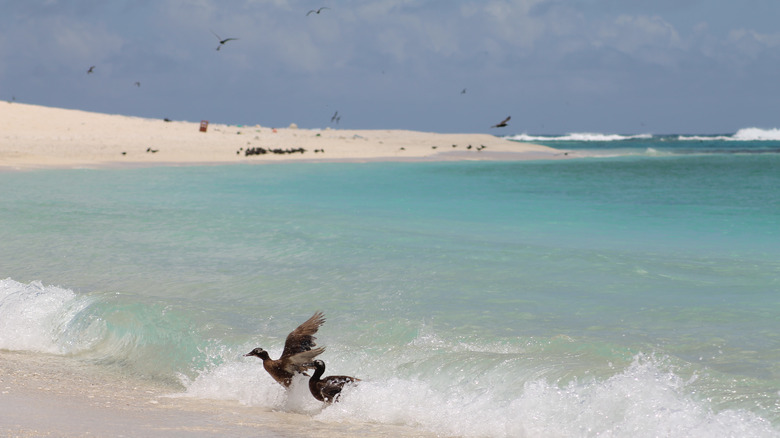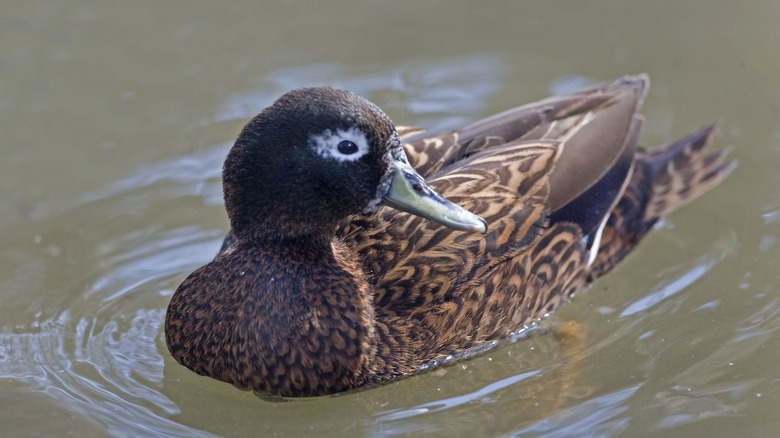Why You Can't Visit The Unique Wildlife On This Remote Hawaiian Island
You probably know the major Hawai'ian islands: Maui, the Big Island of Hawai'i, Kauai, Molokai, Oahu, and Lanai. What you might not know is that there are a bunch of others to the northwest. One of those islands is a tiny place — a mere 2.3 square miles — but fascinating. It's shaped like an elongated donut with an unusual lake in the middle. It's got animals that aren't found anywhere else, and, unfortunately, it often ends up as the repository for the trash floating in the ocean. This is the island of Laysan, which is also known as Kauō in its native Hawai'ian. There are no buildings or people here, and it's protected as part of a marine national monument called Papahānaumokuākea.
You may see some travel blogs that say Laysan Island is a great place to snorkel or visit, but you are actually not allowed to visit unless you're part of a scientific expedition or a volunteer group to clean up the island. In fact, according to the National Oceanic and Atmospheric Administration (NOAA), it's a four-day boat ride from Oahu, even if you could. That said, it's important to know the history of this island, which was hurt by trash, invasive species, and trade in bird guano and feathers. Here's what to know about Laysan Island and how it's doing today.
Laysan Island and what its been through
Laysan Island is a bit of a marvel, and birds rule the island. This elongated donut's center is a lake with high salinity. If you watch, you can see tiny finches drinking out of this salty lake. But freshwater is sitting on top of the lake's saltwater, so the finches aren't going to get sick. In addition to the Laysan Finch, some of the inhabitants include the Laysan Duck, which is the world's rarest, as well as black-footed albatross, wedge-tailed shearwaters, and bristle-thighed curlews. There are also green sea turtles, monk seals, and plenty of fish in the coral reefs surrounding the island.
Humans bringing in invasive species caused resident species like the Laysan honeycreeper, and the miller bird to become extinct. In the early 1900s, animals like rabbits were brought in, harming the delicate environmental balance. Laysan Island was and is a haven for seabirds, and that was its downfall. It was a rich source of bird feathers and guano (or excrement), which was harvested for use as a fertilizer. This all ended in 1909 when then-president Theodore Roosevelt brought about the Hawaiian Islands Bird Reservation.
These days, invasive species have been controlled or eliminated, but Laysan still has to deal with the garbage from ships that washes up on the beach. That said, it's safe from tourism, and the island is cleaned up by volunteers. Though we can't visit this beautiful place, it's a reminder that our environment needs to be protected.

